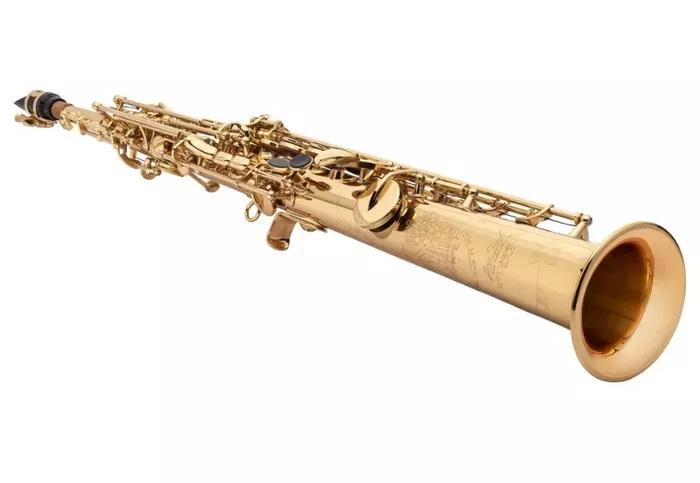What Are Common Issues with Soprano Saxophones?

Soprano saxophones are among the most challenging members of the saxophone family to play. They are smaller and straighter than alto or tenor saxophones. Their size and design make them more sensitive to player technique. They require precise breath control, embouchure, and finger positioning. As a result, musicians often encounter specific issues that can affect tone, intonation, and response. Understanding these problems is essential for both beginners and experienced players. This article explores the common issues with soprano saxophones, including tuning, key mechanics, tone production, and maintenance considerations.
Intonation Problems
Difficulty with Accurate Pitch
Soprano saxophones are notorious for intonation issues. The straight design amplifies small errors in embouchure and breath support. A slight change in mouth shape can make notes sharp or flat. Notes in the upper register are especially sensitive. Players must constantly adjust pitch with subtle finger and embouchure movements. Even professional musicians struggle with tuning on this instrument.
Influence of Temperature and Environment
Environmental factors also affect intonation. Temperature changes can cause the instrument to expand or contract. A cold saxophone may sound flat. A warm instrument may sound sharp. Humidity can affect pads and resonance. Soprano saxophones are more sensitive to these changes than larger saxophones. Players often need to retune frequently during practice or performance. This sensitivity can frustrate beginners and requires consistent attention.
Tone Production Challenges
Producing a Consistent Sound
Tone production on soprano saxophones is another common issue. The small bore and narrow mouthpiece require precise air support. Without steady breath, the tone can become airy, thin, or unstable. Players may find it difficult to produce a full, centered sound. Developing a strong, consistent tone often takes years of practice. Teachers recommend long-tone exercises and controlled breathing techniques to improve sound quality.
Overblowing and Key Response
Overblowing is a frequent problem on soprano saxophones. Pushing too much air can cause notes to jump unintentionally to higher harmonics. This issue affects the ease of playing scales and smooth legato passages. Key response is also critical. Some keys may stick or be slow to return, making certain passages difficult. These mechanical and acoustic issues combine to make tone control a persistent challenge.
Mechanical and Keywork Issues
Key Alignment and Leaks
Soprano saxophones have delicate key mechanisms. Pads can leak if misaligned, worn, or improperly seated. Leaks affect tone and response. A leaking pad may cause a note to sound weak, airy, or fail to speak at all. Regular maintenance is essential. Players need to check pad seating, spring tension, and key alignment frequently. Proper adjustment prevents long-term performance problems.
Sensitivity to Player Pressure
The smaller keywork is more sensitive to pressure. Pressing a key too hard or unevenly can affect intonation. The small distance between pads means that slight misplacement of fingers can influence note quality. Players must develop precise finger control and a light touch. Soprano saxophones demand accuracy in both embouchure and fingering simultaneously.
Challenges with Range and Fingerings
Difficulty in Upper Register
The upper register on soprano saxophones is often challenging. Notes above the staff require careful control of air, embouchure, and fingerings. Players may encounter squeaks or instability. This can disrupt melodic lines or technical passages. Practicing overtones and harmonic exercises helps strengthen control in the upper register.
Cross-Fingerings and Tricky Notes
Certain notes require cross-fingerings or unusual combinations. These fingerings can feel awkward due to the small size of the instrument. Transitioning smoothly between low and high notes can be difficult. The precision required for fast passages amplifies these challenges. Proper training and methodical practice are necessary to overcome these technical hurdles.
Maintenance and Durability Concerns
Sensitivity of Materials
Soprano saxophones are sensitive to material changes. The straight body can bend or dent more easily than larger saxophones. The keys and rods are delicate. Mishandling or dropping the instrument can result in alignment issues or leaks. Proper case storage and careful handling are essential. Regular cleaning prevents corrosion and pad deterioration.
Pad and Cork Wear
Pads and corks wear out more quickly due to the instrument’s small size. Replacing pads is more delicate because the spacing is tight. Misaligned pads can create leaks that are difficult to detect. Corks that hold the neck or key mechanisms in place must be maintained regularly. Failure to attend to these issues affects playability and sound quality over time.
Tips for Overcoming Common Issues
Regular Practice and Technique
Developing correct embouchure, breath control, and finger precision is essential. Long-tone exercises, scale practice, and overtone studies help with tone and intonation. Students and professionals alike benefit from slow, focused practice that emphasizes consistency over speed.
Maintenance and Professional Support
Frequent inspection by a skilled repair technician prevents long-term mechanical issues. Pads, springs, and key alignment should be checked regularly. Cleaning the instrument daily preserves materials and prevents corrosion. Proper care supports performance and prolongs the life of the instrument.
Adapting to Environmental Conditions
Being aware of temperature and humidity helps with tuning. Players should warm up the instrument gradually and retune when environmental conditions change. Developing a flexible approach to intonation allows for smoother performance under varying conditions.
Conclusion
Soprano saxophones are rewarding yet demanding instruments. Common issues include intonation problems, tone production challenges, mechanical keywork concerns, and difficulties in the upper register. Environmental factors, material sensitivity, and delicate key mechanisms further complicate play. Patience, consistent practice, and regular maintenance are essential for overcoming these challenges. Proper attention to embouchure, breath control, and finger precision improves tone and intonation. Careful handling and professional servicing maintain the instrument’s longevity. Despite these challenges, the soprano saxophone offers unique expressive possibilities. By understanding and addressing common issues, players can achieve clarity, beauty, and precision in their performance, fully realizing the instrument’s musical potential.
- Art
- Causes
- Crafts
- Dance
- Drinks
- Film
- Fitness
- Food
- Spiele
- Gardening
- Health
- Startseite
- Literature
- Music
- Networking
- Andere
- Party
- Religion
- Shopping
- Sports
- Theater
- Wellness



